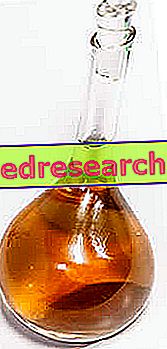By Dr. Francesco Casillo
How many times has it happened that, after having found high values of transaminases, the doctor or whoever has alerted him about possible liver stress ? Are the values out of range (with respect to the reference) of the transaminases sign and prediction of liver stress ? The answer is "ni" !

If it is a subject who is training vigorously "could" be, but they are not absolute markers of hepatic stress-induced prediction - it will be explained a little later why; if, instead, they are sedentary subjects, they are very likely! (Transaminases could be elevated even in other circumstances: myocardial infarction and taking of herbal preparations or drugs and in other conditions, but here they are not taken into consideration, as they are beyond the mere purpose of highlighting how high values can be found even in conditions of complete healthiness and not necessarily in conditions of liver stress, as mass knowledge wants).
ALT (GPT) and AST (GOT) are liver enzymes (more commonly known, precisely, as "transaminases"). Their handling is interpreted as a sign of hepatic suffering as present in the liver. The link that is omitted is that these enzymes are also present in other tissues, including the musculoskeletal one. In fact, tissue alterations such as micro-lesions on muscle tissue induced by vigorous training determine their movement, shifting their values out of the reference ranges ; the lack of knowledge of their musculoskeletal location and the lack of consideration of the patient's complete clinical picture and lifestyle inevitably leads to unfounded alarms.
In an in-depth study, dr. Rob Dickerman of the Department of Medicine of the University of North Texas collected the hematology tests related to ALT, AST, CK and Gamma GT from five categories of subjects (65): body-builders who used anabolic steroids, natural body-builders, patients with liver disease (viral hepatitis), trained students and sedentary students. The results were unequivocal: ALT and AST were elevated in all body builders, whether or not they used anabolic substances. Gamma GT (sensitive markers of liver damage) were elevated above the reference range only in people with current liver disease. Creatin kinase (CK), an enzyme that rises in response to muscle-skeletal tissue damage, was elevated in all groups that included training protocols - without, however, reporting any damage or stress to the liver. Furthermore, CK was highly correlated to ALT and AST levels.
Resistance training, typical of bodybuilding, causing musculoskeletal damage, causes ALT and AST to be elevated, which are also found in the muscles and which, therefore, can easily be confused as a sign of stress or liver disease if others are not considered values that give a more precise picture of the tissue substrate from which the observed enzyme rise is derived (65). Therefore, the significance of the elevation of the ALT and AST values may be different, depending on whether the subjects observed are athletes (subjected to particular training regimes inducing muscle micro-injuries, as in the case of bodybuilders) or sedentary .



